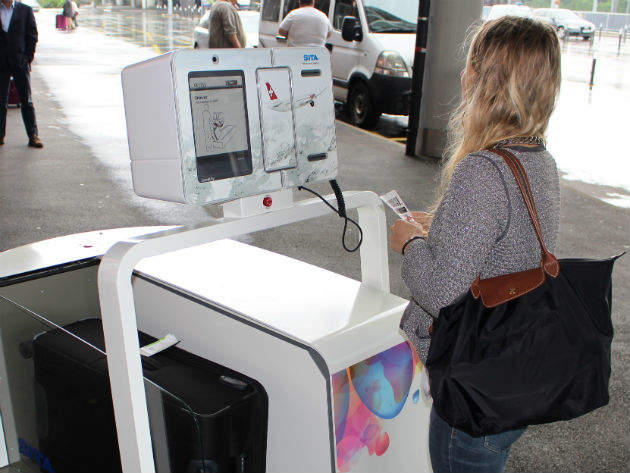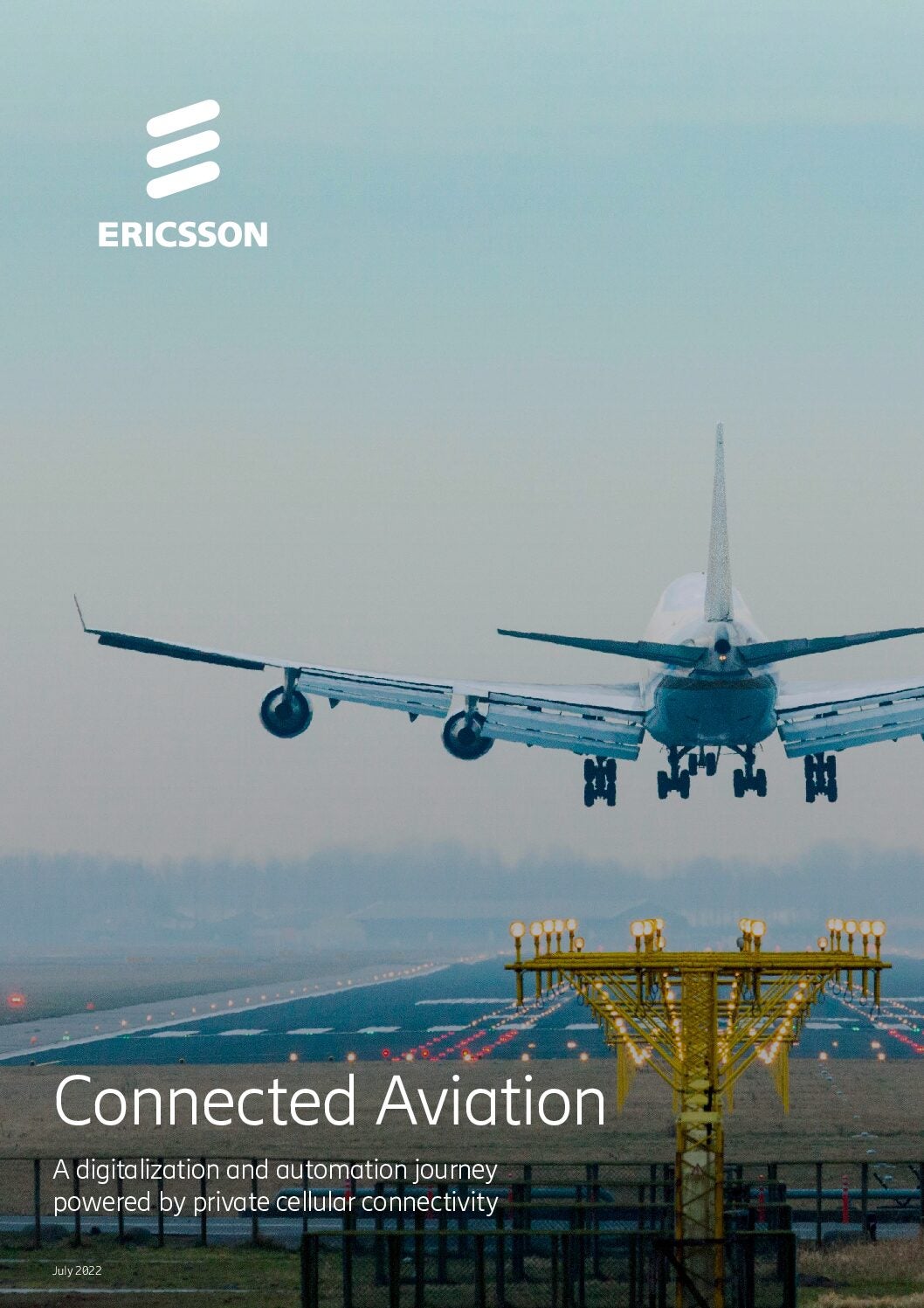
Baggage Handling Operation Technology
Almost 4 billion passengers will fly in 2017, which, for baggage handling systems around the world, means accounting for over 4.5 billion bags.
Ten years ago there were around 50 million mishandled bags in the system each year; however, since then, airlines have introduced bag charges and the number of passengers and their baggage-service expectations have increased. Today, technology that can track baggage while significantly reducing the number of mishandled bags, thereby improving the passenger experience, is more essential than ever. But, the benefits don’t stop with the passenger; smarter baggage handling systems will also save the industry $2bn each year, which, according to SITA’s 2017 Baggage Report, was the approximate cost of recovering and reuniting passengers with lost bags in 2016.

US Tariffs are shifting - will you react or anticipate?
Don’t let policy changes catch you off guard. Stay proactive with real-time data and expert analysis.
By GlobalDataThe gradual introduction of technology and improved systems over the last decade has already significantly improved the baggage handling success rate. Data shows that over the last decade passengers have increased by 1.2 billion yet the number of mishandled bags has dropped to just over 20 million.
The rise of bag-tracking technology
In a bid to further improve baggage handling, the 200 airports and 500 airlines (representing 83% of scheduled traffic) that are members of the International Air Transport Association (IATA) are working towards meeting the association’s ‘Resolution 753’. This means that from June 2018 every piece of luggage will be tracked and accounted for, from check-in to passenger pick-up.
“Airports, airlines and ground handlers go to great lengths to ensure passengers’ checked baggage makes the same journey and arrives safely at the destination,” says Matthys Serfontein, vice president of SITA’s Airport Solution. “SITA’s BagJourney supports this experience by making sure everyone involved in the baggage process has up-to-date information about the exact location of each bag being handled.”
BagJourney’s features help airlines become compliant with Resolution 753. “It is a repository of all baggage handling events, from check-in all the way to delivery of that bag to the passenger at the destination, but there are benefits beyond meeting Resolution 753,” explains Serfontein. “BagJourney can also provide assistance if a passenger’s baggage doesn’t make it onto the aircraft as it links to SITA’s WorldTracer system which tracks lost or mishandled luggage.”
In this case, if a passenger’s bag is mishandled, a request can be processed while aboard the aircraft and before arriving at the destination to avoid delays.
Following the implementation of BagJourney, Etihad Airways, which carries 24.5 million bags each year across 8,500 scheduled passenger flights, has reported a 20% fall in mishandled bags from 2015 and now closes more than 90% of mishandled baggage cases.
Passengers embrace self-service check-in
In 30 airports around the world – serving 50 different airlines – SITA’s Scan&Fly units serve as bag check-in points for passengers. It is a retro-fit solution that allows passengers to check-in their luggage with or without a pre-tagged bag. This type of system is proving to be popular as, according to SITA’s 2016 Passenger IT Trends Survey, 91% of passengers using self-service technology to check-in will continue to do so in preference to face-to-face interaction.
Last year at London’s Luton Airport, Rockwell Collins introduced the touchless T-series bag drop, which transitioned into a permanent installation in November 2016. Part of a £110m investment by the airport to improve passenger experience, the two-step configuration sees passengers weigh the bags and print tags before the bag is automatically dispatched, without the passenger needing to touch a button or screen.
“This is the world’s first touch-less bag drop,” says Tony Chapman, senior director of product management and strategic programs for Rockwell Collins, adding that the ![]()
![]() self-bag drop solution is now available in 26 locations. “In terms of usage, our installations processed over 200,000 bags last week alone.”
self-bag drop solution is now available in 26 locations. “In terms of usage, our installations processed over 200,000 bags last week alone.”
Chapman explains that airport benefits include increased terminal efficiency and baggage system throughput, while airline benefits are ancillary revenue uplift, decreased handling costs and improved customer satisfaction scores. “For passengers, the major benefits are greatly reduced queue times, fast and simple processing and a stress-free check-in experience,” he adds.
Tech to tackle mishandled bags
While the number of mishandled bags is decreasing, data from 2016 shows that 47% of mishandling occur during transfer. Copenhagen Airport – which has many connecting flights – had been dealing with the problem of tags becoming crumpled or unreadable, which meant the bags could not be processed by the baggage handling system.
“Our typical number of no-read bag tags was running at about 2%-3%, so reducing this number was key to delivering real improvement in the efficiency of our baggage handling system (BHS) capacity and workflow,” says Karsten Madsen, of Copenhagen Airport.
The airport introduced Beumer Group’s video coding system (VCS), which uses similar software that is widely used in the parcel industry, and automatic tag reader (ATR) cameras within the baggage-handling system to solve the problem of no-read tags. When a no-read baggage tag occurs, an image is sent to an operator who will choose the best pictures for viewing and encode the information remotely via a workstation or tablet.
“The VCS allows operators, no matter where they may be located, to zoom-in to view no-read tags, using a touch-screen, rather than having to physically turn or lift the bag,” says Kim Madsen, senior software system manager at Beumer Group’s airport division. “It also means that the bag can continue to be transported within the BHS whilst the tag is being checked.”
The result for Copenhagen is a reduced no-read tag rate of around 50%. “I estimate that this means we prevent up to ten bags being short-shipped every day, allowing us to save around €100 for each short-shipment in addition to improving overall passenger satisfaction,” says Madsen.
The future of baggage tracking
RFID technology is expected to further improve the no-read tag rate in the future. RFID tags can be embedded into bag tags and track luggage in real-time. With RFID readers reading tags via radio waves, hidden or unreadable tags do not present a problem, leading to fewer mishandled bags. While cost is cited as one of the biggest obstacles, SITA and IATA calculate that RFID could be implemented at around $0.10 per passenger, while generating savings of more than $0.20 per passenger.
According to a study by SITA, Delta Airlines, which processes 120 million bags a year, invested $50m in RFID technology to help meet Resolution 753. Now deployed at 344 Delta stations worldwide, the airline has reported a 99.9% bag-tracking success rate.
For the future of bag drop-off, however, intelligent machines, like Leo the baggage robot, could take off at airports. Leo is a fully autonomous robot that will check-in and print bag tags, and then transport the bags to the desired location – all while avoiding obstacles in the busy airport.
Leo was trialled at Geneva Airport last year and is currently part of various trials and demonstrations around the world.
“Leo demonstrates that robotics hold the key to more effective, secure and smarter baggage handling,” says Serfontein. “By limiting the number of bags and trolleys in the terminal, the use of a robot such as Leo also helps airports accommodate a growing number of passengers without compromising the airport experience inside the terminal. Congestion is reduced and airport navigation becomes easier.”







